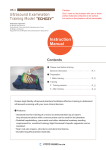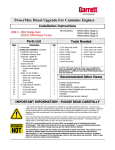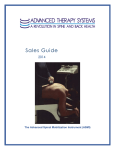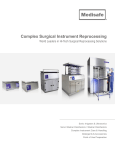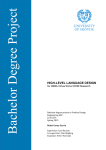Download Ultrasound Compatible Lumbar Puncture/ Epidural Simulator
Transcript
M43E Ultrasound Compatible Lumbar Puncture/ Epidural Simulator Instruction Manual Contents ● Please read General information P.1 ● Preparation P.2-6 Before training ● Training ● After training P.7 P.8-10 Ultrasound compatible puncture block is anatomically correct and offers realistic image of ultrasound. It includes lumbar vertebrae, spinous process, superior articular process, transverse process, epidural space and spinal dura mater. ● Features 1. Ultrasonic landmarks of lumbar spine can be visualized. 2. Replacement parts are durable for multiple procedures. 3. This simulator can be positioned in the upright or lateral position. 4. Translucent block makes the needle trace visible. 5. The lumbar region model provides a platform for wide training opportunities, by adding interchangeable training blocks for landmark and fluoroscopic procedures. * Epidural space is designed to be filled with water for better sonographic imaging. Skip this process if you would like to perform loss of resistance technique. Please read General information Set includes Before your first use, ensure that you have all components listed below. ⑦ ① ⑧ ② ③ 1 1 ③ Ultrasound skin cover 1 ④ Irrigation bottle ⑤ Syringe 1 ⑥ Stand 1 ⑦ Irrigator bag 1 ⑧ Support base 1 (Lateral position) ⑨ Support base (Sitting position) Storage case (no image) Instruction manual ⑥ ④ ① Lower torso manikin ② Ultrasound puncture pad 1 1 1 ⑨ ⑤ Caution: Please use the ultrasound skin cover (11348-230) for training. Skin cover for landmark procedure (11348-150) is not ultrasound compatible. * The lower torso manikin ① is the same model as that of the M43B: Lumbar Puncture Simulator II. DOs and DON’T s DO s DON’Ts Handle with care Never wipe the phantom or models with thinner or organic solvent. The materials for phantom and models are special composition of soft resin. Please handle with care at all times. Do not mark on the the components except for the ultrasound skin cover with pen or leave printed materials contacted on their surface. Ink marks on the models will be irremovable. Cleaning and care Please clean the phantom completely every time after you finish the training. Remaining ultrasound gel on the phantom may deteriorate the product. *Skin marking on the ultrasound skin cover can be removed. Keep the training set at room temperature, away from heat, moisture and direct sunlight. Please note: The color of the phantom may change overtime. However, please be assured that this is not deterioration of the material and the ultrasonic features of the phantom will stay unaffected. 1 Preparation Before training 1 Remove the puncture pad *Product is packaged as shown on the left. 1. Disengage the magnets and remove the skin cover from the manikin. 2. Remove the clear plastic sheet slowly from one side of the puncture pad. * Be sure to hold the magnets. * Work with both hands. Disengage the remaining to magnets one by one. Do not pull by the skin. 3. Hold the puncture pad by the plastic edges and remove from the lower torso manikin. 2 Preparation Before training 2 Prepare the stand 1. Assemble the stand. 2. Hang the irrigator bag on the stand. 3 Preparation of the US puncture pad (Lumbar puncture) Ultrasound puncture pad Plug for the syringe Plug for the syringe (for subarachnoid space) (for epidural space) Connector to the irrigator bag (for subarachnoid space) Connector to the irrigation bottle 1. Connect the tip of the tube from the irrigator bag to the central connector at the head-end of puncture pad. *Insert the tube completely to prevent the tube from detaching during training sessions. Put the tube tip up to here. pad 3 Preparation Before training 2 Preparation of the US puncture pad (Lumbar puncture) 2. Fill the irrigator bag with water until the surface reaches to the 200mL line. 3. Connect the syringe to the plug for subarachnoid space on the opposite side of the irrigator bag tube. Insert the syringe, turn clockwise and lock in place. 200mL Syringe Insert and turn clockwise pad 4. Open the clamp. Open the clamp Detach 5. Pull the syringe slowly to draw water into the pad. To remove any air bubbles remaining in the tube, tilt the pad and continue to pull the syringe slowly. Also check from the back side of the pad to see if any bubbles remain in the tube. 6. Close the clamp. 7. Turn the syringe counter-clockwise to unlock and remove from the puncture pad. Close the clamp 4 Preparation Before training 3 Preparation of the US puncture pad (Epidural) * Epidural space is designed to be filled with water for better sonographic imaging. Skip this process if you would like to perform loss of resistance technique. 1. Open the lid and fill the bottle with water till 1/3 of its hight. Then reset the lid. Be sure to twist the bottle part for opening and closing the lid. *Twisting the lid of the bottle may damage the tubing. 2. Connect the tip of the tube from the irrigation bottle to the connector at the head-end of the puncture pad. 3. Connect the syringe to the plug for epidural space on the puncture pad. Insert the syringe, turn clockwise and lock in place. Detach Syringe pad 4. Pull the syringe slowly to draw water into the pad. To remove any air bubbles remaining in the pad or the tube, tilt the pad and continue to pull the syringe slowly. 5 Insert and turn clockwise 5. Turn the syringe counter-clockwise to unlock and remove from the puncture pad. Preparation Before training 4 Set the puncture pad in the manikin 1. Hold the puncture pad by the plastic edges and insert into the lower torso manikin. * Be careful not to fold the tubing. 5 Attach the skin cover to the lower torso manikin 1. Noting the marks at the back of the skin cover (L,R,↑), attach it to the lower torso manikin. 2. Attach two corners of the skin cover to the manikin with the magnets. As you lay the skin down, press out any remaining air between the skin and the puncture pad and attach the other two corners. * The orientation marks come on the inner side of the skin cover. *Overtime, the surface of the pad may become less adhesive. When this occurs, apply ultrasound gel on the pad surface to help the pad attach to the skin. *Be sure to wash and remove all remaining gel after training/ before storage. Dried gel may damage the products. 6 Training 2 Place the lower torso manikin on a support base ventral side The higher side comes to the head end of the manikin. head end dorsal side head end higher lower The sitting position support base is designed to come the front end of the lower torso manikin. ventral side ventral side The higher side comes to the ventral side of the manikin. dorsal side higher lower 3 Training session Training Skills ○ Ultrasound-guided lumbar puncture epidural anaesthesia ○ CSF collection and CSF pressure measurement ○ Ultrasound-guided The ultrasound skin cover may be marked with a surgical skin marker, and markings can be removed. Do not mark on the the components except for the ultrasound skin cover. Ink marks will be irremovable. ● Lumbar puncture Please be sure to leave the clamp to the irrigator bag opened during training. * Refill the irrigator bag with more water once the water has run out. ● Epidural anaesthesia Epidural space is designed to be filled with water for better sonographic imaging. Skip this process if you would like to perform loss of resistance technique. Successful performance can be confirmed by observing the injected air flows into the irigation bottle. Caution: Please use the ultrasound skin cover (11348-230) for training. Skin cover for landmark procedure (11348-150) is not ultrasound compatible. 7 After Training 1 After Training 1. Wipe off any remaining ultrasound gel from the skin or manikin using wet tissues. 2. Remove the ultrasound skin cover. a. Disengage the magnets at the two adjacent corners. Be sure to hold the magnets and not to pull by the skin. b. Peel the skin cover slowly off of the manikin. 3. Hold the puncture pad by the plastic edges and remove from the lower torso manikin. 8 * Work with both hands. Disengage the remaining to magnets one by one. Do not pull by the skin. After Training 1 After Training ● Remove water from subarachnoid space 5. Open the clamp. 4. Connect a syringe filled with air to the plug for subarachnoid space of the puncture pad. 6. Slowly push air from the syringe into the water-filled pad until all water has been removed from the pad. ● 7. Close the clamp. Remove water from epidural space 8. Discard any remaining water in the irrigation bottle. Twist the bottom part of the bottle to remove the top. 9. Connect a syringe to the plug for epidural space of the puncture pad. Pull the syringe slowly until all water has been removed from the pad. 9 After Training 1 After Training ● Cleaning and Storage 10. Remove the tube attached to the puncture pad. 11. Please be sure to wipe all remaining ultrasound gel on the ultrasound puncture pad with wet tissues. 12. Cover the surface of the puncture pad with a clear plastic sheet and press out any remaining air between the sheet and pad. * Please gently wipe off any remaining gel on the pad and wash with water if necessary. Please do not rub on the pad harshly, as it may damage the surface and affect the ultrasound images. * Remove all remaining gel before storing. Any remaining gel substance will create a layer on the pad surface and affect the ultrasound images. 13. Discard any remaining water in the irrigator bag. 14. Store the puncture pad with the protective sheet in the lower torso manikin. 10 Caution Do not mark on the phantom with pen or leave printed materials contacted on its surface. Ink marks on the phantom will be irremovable. The contents of this manual are subject to change without prior notice. No part of this instruction manual may be reproduced or transmitted in any form without permission from the manufacturer. Please contact manufacturer for extra copies of this manual which may contain important updates and revisions. Please contact manufacturer with any discrepancies, typos, or mistakes in this manual or product feedback. Your cooperation is greatly appreciated. URL:http://www.kyotokagaku.com e-mail:[email protected] Worldwide Inquiries & Ordering Kyotokagaku Head Office and Factories: 15 Kitanekoya-cho, Fushimi-ku, Kyoto, 612-8388, JAPAN Tel: +81-75-605-2510 Fax: +81-75-605-2519 Kyotokagaku USA Office: USA and Canada sales and services 3109 Lomita Boulevard, Torrance, CA 90505-5108, USA Tel: 1-310-325-8860 Fax: 1-310-325-8867 2015.01












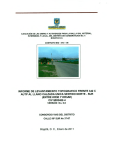
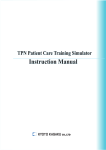
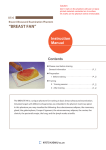
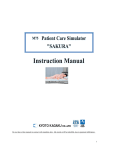
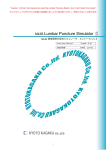
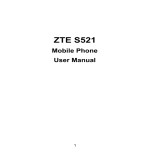
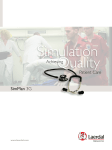
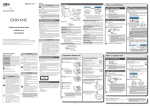
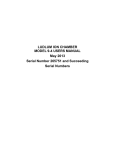
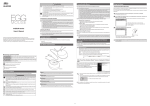
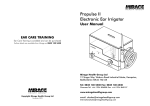
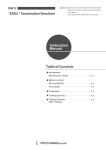
![[PDF:0.6MB]](http://vs1.manualzilla.com/store/data/005664304_1-5124c75bfbffa9dc3657cce05bb0013f-150x150.png)

